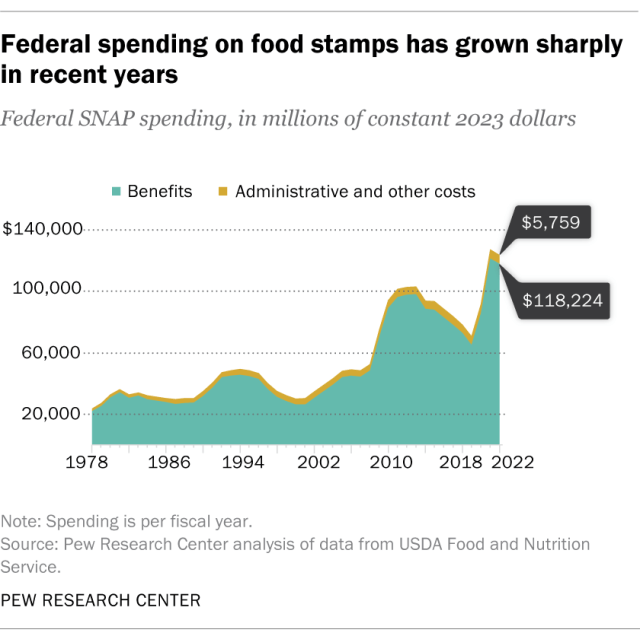

As the U.S. braces for an influx of new welfare cases from the southern border and struggles with existing social challenges, the nation may face inflated consumer spending figures that belie the true economic and fiscal health of the country.
In a recent examination of the United States' economic landscape, underlying data suggests a concerning trend beneath the ostensibly robust job growth and GDP figures. The Wall Street Journal highlighted a phenomenon they termed the "welfare industrial complex," which is contributing significantly to the nation's employment statistics. Analysis reveals that a staggering 56% of the 2.8 million new jobs created last year were in government social assistance and healthcare sectors. This trend is particularly pronounced in traditionally blue states such as New York, Illinois, and Michigan, where welfare-related jobs account for more than the entirety of job gains, indicating a contraction in the productive sectors of their economies.
The implications of this shift are profound, with the real unemployment rate potentially nearing 5% if these welfare-related jobs were excluded. This figure could escalate to approximately 8% when considering the workforce that has not re-engaged post-COVID-19 pandemic. This surge in welfare spending is erroneously counted as GDP growth, misleadingly suggesting economic health while, in fact, it represents an economic restructuring away from productivity and towards dependency.
The welfare costs are staggering, with New York City spending $394 daily per migrant, translating to a yearly expense of $144,000, exceeding the average American income. This pattern is not isolated to migrants; homelessness initiatives have also seen counterproductive outcomes. Joe Biden's stimulus bill allocated $43 billion to combat homelessness, only to see an increase of 85,000 in the homeless population, with individual costs amounting to $86,000 annually.

Critics argue that this approach to welfare is not only financially unsustainable but also fails to address underlying social issues effectively. With millions of dollars poured into welfare programs, the incentive structure may inadvertently encourage higher welfare dependency. Furthermore, the cost of progressive government initiatives is high, as evidenced by Los Angeles' $837,000 per unit expense to house the homeless.
As the U.S. braces for an influx of new welfare cases from the southern border and struggles with existing social challenges, the nation may face inflated consumer spending figures that belie the true economic and fiscal health of the country. This welfare-centric job growth and the associated financial burden present a critical conversation point for policymakers and citizens alike.
For continued coverage on the state of the American economy and its underlying challenges, stay tuned to Peter St. Onge's reports.
URL Slug: welfare-industrial-complex-us-job-growth
Google Metadata Description: An investigative report reveals how a significant portion of U.S. job growth is tied to government welfare spending, masking the true health of the economy and leading to potentially unsustainable financial practices.